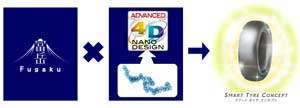
Sumitomo Rubber Industries (SRI) is utilising the Fugaku Supercomputer as it becomes available for general use by academic and industrial researchers from March 9. SRI has applied to make use of HPCI (High-Performance Computing Infrastructure) for industrial research purposes in 2021.
Fugaku is developed to produce world-leading computational results as the successor to the K Computer. It is equipped with 158,976 central processing units (CPU), and is capable of performing approximately 442 quadrillion calculations/sec. It was rated as the world’s most powerful supercomputer by TOP500, HPCG, HPL-AI, and Graph500 twice in a row (in June and November of 2020).
SRI has started using its proprietary Advanced 4D Nano Design Tyre Materials Development Technology since its launch in 2015 to develop new rubber materials with the aim of achieving simultaneous improvements in three key tyre performance traits: Fuel Efficiency, Grip and Wear Resistance. Fugaku is expected to further advance the 4D nano design technology to better respond to the needs of CASE, MaaS and other new automotive innovations towards enabling the “Mobility Society of the Future” agenda, SRI said.
As part of Smart Tyre Concept, SRI has recently been working on the development of “Performance Sustaining Technology,” a new technology that curbs the decline in tyre performance that occurs over time due to wear and tear, thereby allowing tyres to maintain like-new performance for longer. SRI explained that the a major challenge involved in developing this technology is it requires requirement for a precise understanding of the chemical changes occurring within rubber at the molecular level during tyre usage so that these chemical changes can then be controlled.
Fugaku, thus, enables SRI to further advance rubber materials simulation technology in order to accurately simulate not only molecular behaviour, but also actual chemical changes.
